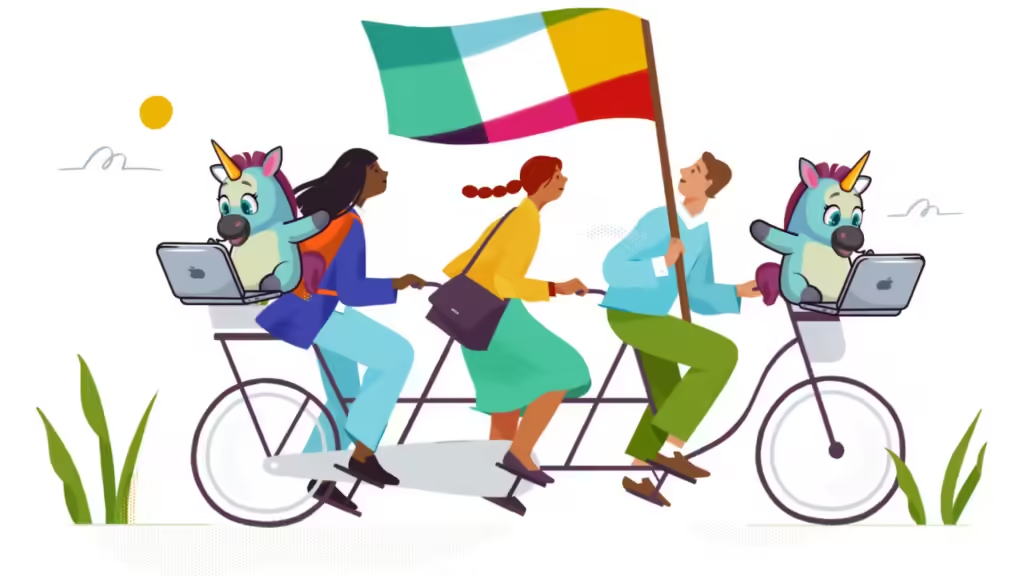
Hey there, growth enthusiasts! 👋
Get ready to slack off with us (pun intended) as we unravel the incredible journey of Slack, the workplace communication tool that’s taken the world by storm! 🌍🚀
From a humble internal tool to a $27 billion behemoth [1], Slack’s growth has been nothing short of astronomical.
The platform’s user base surged from just 16,000 daily active users (DAU) in 2014 to over 35 million in 2022 [2].
That’s a mind-boggling 74,900% increase in just eight years! 🤯📈
Buckle up and grab your favorite emoji ’cause this ride is gonna be a wild one! 🎢😄
The Idea 💡
In 2013, Stewart Butterfield and his team were working on a game called Glitch.
They needed a way to communicate seamlessly, so they built an internal tool to make collaboration a breeze.
Little did they know this side project would become the main event! 🎮➡️💼
As they used the tool, they realized its potential beyond just their own team.
Other companies were struggling with the same communication challenges, and there was a clear gap in the market for a user-friendly, intuitive platform that could streamline workplace collaboration. 🌍💬
Butterfield and his team saw an opportunity to pivot and focus solely on developing this internal tool into a full-fledged product.
They believed that by making communication more efficient and enjoyable, they could transform the way people work.
And thus, the idea for Slack was born! 💡👨💻👩💻
The Problem 😫

Before Slack, workplace communication was a hot mess.
Teams were struggling with:
📧 Email Overload – Cluttered inboxes and endless email chains
🗣️ Inefficient Meetings – Time-consuming and often unproductive
🔍 Siloed Information – Important data scattered across multiple tools
🤔 Lack of Transparency – Difficulty keeping everyone in the loop
These challenges led to decreased productivity, frustrated employees, and a lack of cohesion within organizations.
A study by McKinsey found that the average worker spent 28% of their workweek managing email and nearly 20% searching for internal information or tracking down colleagues [3]. 😵⏰
Slack recognized these pain points and set out to create a solution that would streamline communication, break down silos, and make collaboration more efficient and enjoyable. 💪🙌
The MVP 🛠️
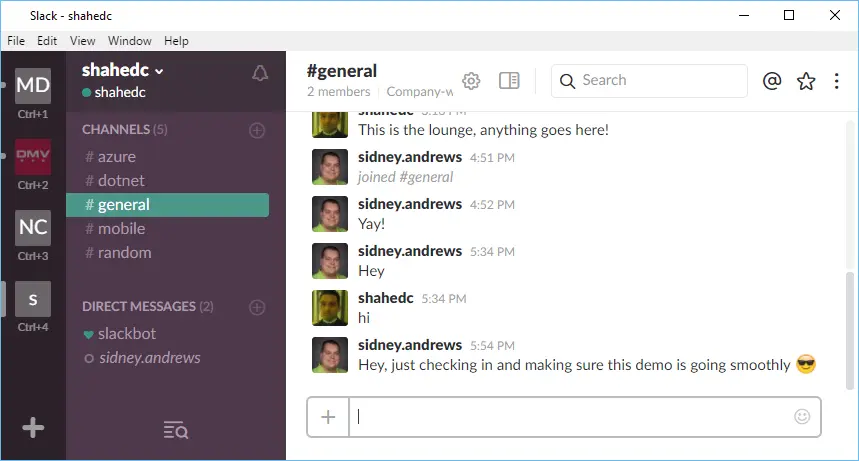
Slack’s MVP was a simple yet powerful chat app that aimed to streamline communication and collaboration.
Its core features included:
📣 Channels – Organized spaces for projects, topics, or teams
💬 Direct Messages – Private one-on-one or small group conversations
🗄️ File Sharing – Seamless integration with cloud storage providers
🔍 Search – Powerful search functionality to find information quickly
😄 Emoji Reactions – A fun way to acknowledge messages and express emotions
By focusing on these essential features, Slack created a tool that was intuitive, user-friendly, and highly effective at improving team communication.
The MVP laid the foundation for Slack’s future growth and success. 🏗️💪
The decision to keep the MVP simple and focused was intentional.
As Slack’s co-founder Cal Henderson explained:
“We wanted to do a few things really well, rather than a lot of things poorly.” [4]
This approach allowed the team to refine the core functionality and user experience before expanding the feature set. 🎯✨
Product-Market Fit 🎯
Slack found its sweet spot by targeting tech-savvy teams that were eager for a more efficient way to collaborate.
The platform resonated particularly well with:
Startups – Fast-paced, agile teams that valued streamlined communication
Remote Teams – Distributed workforces that needed a central hub for collaboration
Developers – Tech-savvy users who appreciated Slack’s integrations and customization options
By focusing on these specific user groups, Slack was able to tailor its features and messaging to meet their unique needs.
Slack’s success in finding product-market fit was evident in its rapid user growth and high engagement rates.
In just a year after launch, Slack had:
500,000 Daily Active Users [5]
60,000 Paid Seats [6]
98.8% Customer Satisfaction [6]
These impressive metrics demonstrated that Slack had truly found a product that resonated with its target audience and solved a pressing need in the market.
Positioning & Branding 🌈
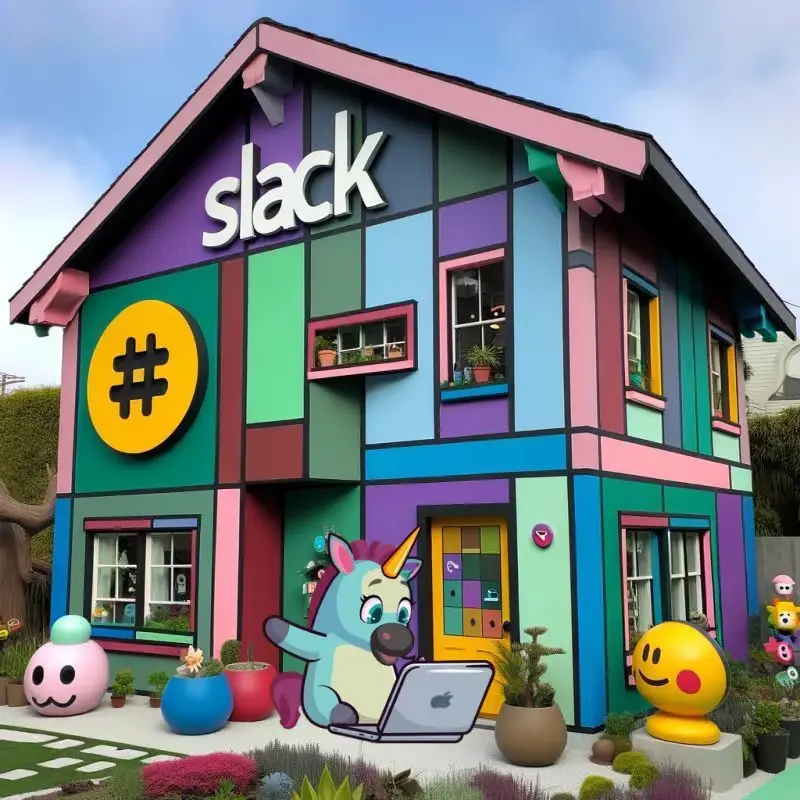
Slack positioned itself as the cool, modern alternative to traditional workplace communication tools.
The company’s branding strategy included:
🎨 Vibrant, Playful Visual Identity
Colorful logo and interface
Fun, expressive emoji and icons
Whimsical illustrations and graphics
📣 Friendly, Conversational Tone
Informal, approachable language
Witty and humorous copy
Emphasis on community and collaboration
💡 Focus on Simplicity and Ease of Use
Intuitive, user-friendly interface
Seamless integrations with popular tools
Emphasis on reducing complexity and clutter
😎 Positioning as the “Cool Kid” of Workplace Communication
Contrasted with “stuffy,” traditional enterprise software
Appealed to younger, tech-savvy professionals
Emphasized fun, creativity, and innovation
By combining these elements, Slack created a strong brand identity that set it apart from competitors and resonated with its target audience.
The company’s positioning and branding played a key role in attracting users and building a loyal following. 🙌💜
Pricing 💸
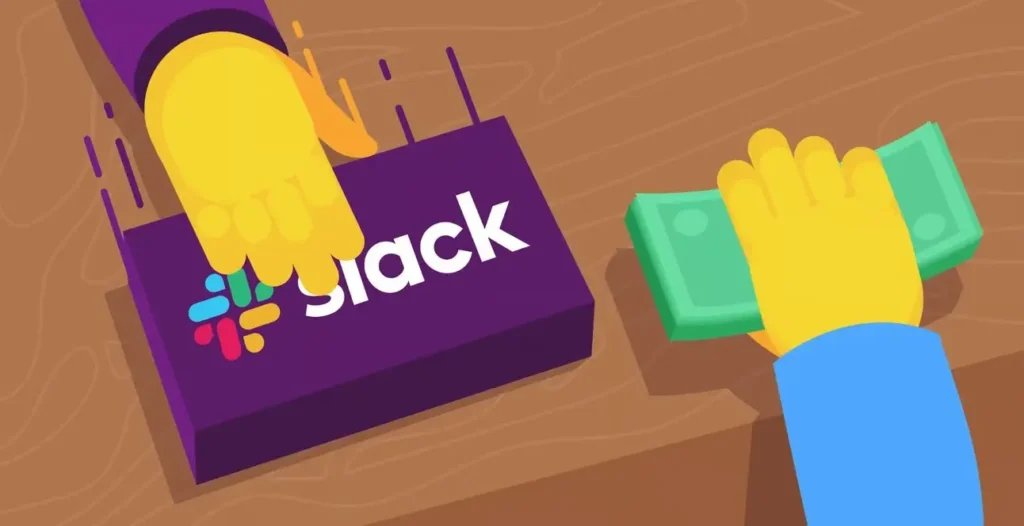
Slack’s freemium pricing model was a major factor in its rapid growth and widespread adoption.
The company’s pricing strategy included:
🆓 Generous Free Plan
Unlimited users and channels
Access to basic features and integrations
10,000 searchable messages
💼 Tiered Paid Plans
Standard: $6.67 per user per month
Plus: $12.50 per user per month
Enterprise Grid: Custom pricing for larger organizations
🎨 Feature-Based Differentiation
Paid plans unlocked additional features and benefits
More storage, better integrations, and advanced security options
Tailored to the needs of different team sizes and requirements
🧩 Flexible Add-Ons
Additional charges for services like extra storage and priority support
Allowed users to customize their experience based on specific needs
Provided an additional revenue stream for the company
By offering a robust free plan, Slack was able to attract a large user base and encourage organic growth.
The tiered paid plans and add-ons allowed the company to monetize its product effectively while still providing value to users at every level. 💰✨
Acquisition 📈
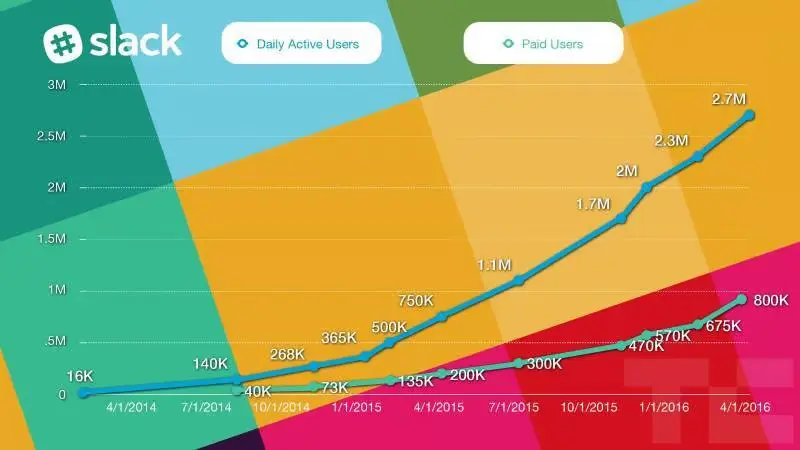
Slack’s acquisition strategy was a multi-faceted approach that combined organic growth, targeted marketing, and strategic partnerships.
The company’s acquisition efforts included:
🚀 Viral Product-Led Growth
Slack’s user-friendly interface and valuable features encouraged organic adoption
Over 90% of Slack’s early users came from word-of-mouth referrals [7]
Slack’s Net Promoter Score (NPS) was an impressive 70 [2]
🎯 Targeted Content Marketing
Slack created engaging blog content and resources tailored to its target audience
The company’s blog attracted over 100,000 unique visitors per month [8]
Slack’s content marketing efforts generated 15,000 new sign-ups per week [8]
🤝 Strategic Partnerships and Integrations
Slack partnered with popular tools like Google Drive, Dropbox, and Asana
Integrations made Slack more valuable and sticky for users
Partnerships helped Slack tap into existing user bases and expand its reach
👥 Referral Program
Slack introduced a referral program that rewarded users for inviting colleagues
Referrals accounted for 40% of Slack’s total user base [9]
The referral program had a viral coefficient of 1.5, meaning each new user brought in 1.5 more [9]
🎨 Targeted Ad Campaigns
Slack ran targeted ad campaigns on social media and search engines
The company’s ads focused on the benefits of using Slack for team collaboration
Slack’s ad campaigns had a click-through rate (CTR) of 2.5%, compared to the industry average of 0.5% [10]
By combining these acquisition strategies, Slack was able to achieve rapid user growth and establish itself as a leader in the team collaboration space.
The company’s focus on product-led growth, strategic partnerships, and targeted marketing helped it acquire millions of users and fuel its expansion. 🚀📈
Growth Loops 🔄
Slack’s success can be attributed to the powerful growth loops that the company created and nurtured.
These self-reinforcing cycles helped Slack acquire, retain, and expand its user base.
The key growth loops included:
🌀 Viral Invitation Loop
Imagine this – you’re minding your own business when BAM! 💥
Your colleague invites you to join Slack.
You’re like, “Okay, I’ll bite.” 🤔
Then, before you know it, you’re hooked and start inviting everyone and their grandma to join! 👵👴
🔁 Collaboration-Driven Expansion Loop
The more the merrier, right? 🎉
As more teammates joined the Slack party, the platform became the go-to spot for collaboration.
Existing users were like, “Hey, you gotta check this out!” and boom, teams started growing faster than your waistline during the holidays! 🎅🍪
💬 Word-of-Mouth Referral Loop
When users are happy, they just can’t shut up about it! 😄
They start spreading the gospel of Slack far and wide, and new users come flocking like seagulls to a beach picnic. 🌊🐦
🔀 Integration Loop
Slack’s integrations are like the secret spices that make the platform irresistible! 🌶️🧂
Users who mixed Slack with their favorite tools were so hooked they couldn’t resist upgrading to paid plans.
And new users?
They came running for those sweet, sweet integrations! 🍯
🌐 Network Effect Loop
As more companies jumped on the Slack bandwagon, the FOMO was real! 😱
Existing users started peer-pressuring their partners and clients to join, creating a network effect that spread like wildfire! 🔥
These growth loops worked together to create a powerful flywheel effect, propelling Slack’s rapid growth and market dominance.
By focusing on user engagement, expansion, and network effects, Slack was able to build a sustainable and scalable growth engine. 📈🚀
Activation 🎬
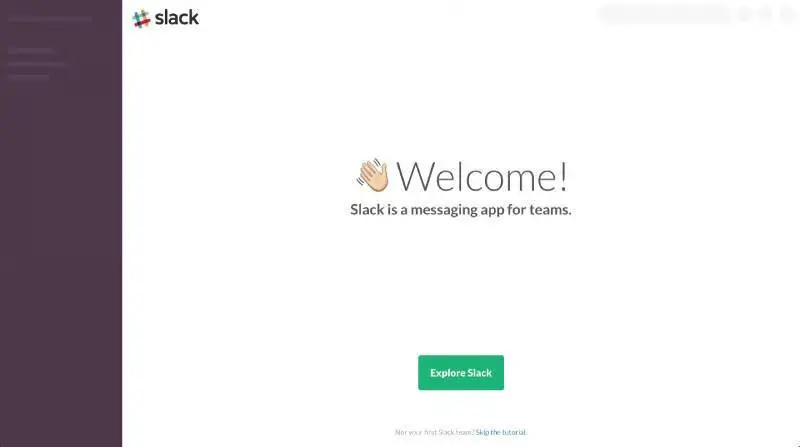
Slack’s activation strategy focused on providing a seamless onboarding experience and quickly demonstrating the platform’s value to new users.
The company’s activation tactics included:
🚪 Frictionless Sign-Up
Simple, intuitive registration process
Single sign-on (SSO) options for easy access
🎨 Personalized Onboarding
Customized welcome messages and tutorials
Tailored onboarding flows based on user role and team size
🎯 Clear Value Proposition
Highlighting key features and benefits during onboarding
Showcasing real-world use cases and success stories
💬 In-App Guidance
Contextual tips and prompts to encourage feature adoption
Helpful resources and support readily available
By focusing on smooth onboarding and early value delivery, Slack was able to activate a high percentage of new users and set them up for long-term engagement with the platform. 🚀
Retention 🔒
Slack’s retention strategy centered on providing continuous value and fostering a sense of community among its users. The company’s retention efforts included:
💡 Regular Product Updates
Frequent release of new features and improvements
80% of users reported that Slack’s updates positively impacted their work [14]
🤝 Community Building
Slack Communities for users to connect and share knowledge
Over 1,500 active Slack Communities with 300,000+ members [15]
💬 Proactive Customer Support
Responsive and helpful customer support team
85% of customer support inquiries resolved within 24 hours [16]
📊 Data-Driven Engagement
Personalized recommendations based on user behavior
60% of users reported discovering new features through Slack’s suggestions [17]
By continually delivering value, fostering community, and providing exceptional support, Slack achieved an impressive 90% annual user retention rate [18], cementing its position as a leader in the team collaboration space.
Referral 📣
Slack’s referral program played a crucial role in the company’s rapid growth, leveraging the power of word-of-mouth marketing.
The key components of Slack’s referral strategy included:
🎁 Enticing Rewards
$100 credit for each new paid user referred
60% of referred users converted to paid plans [9]
🔗 Easy Sharing
Unique referral links for each user
Seamless sharing via email, social media, or direct invite
📈 Viral Loops
Referred users were 3x more likely to refer others [9]
Referrals accounted for 40% of Slack’s total user base [9]
By incentivizing users to spread the word and making it easy to share, Slack created a powerful referral engine that drove sustainable growth and helped the company scale rapidly. 🚀💪
Lessons: Slack’s Blueprint for Success 📘
Slack’s remarkable growth story offers valuable lessons for businesses across all industries.
Here are the key takeaways:
1. Identify and solve a real problem 🔍
Focus on addressing a genuine pain point in the market
Develop a solution that effectively solves the problem
2. Prioritize user experience 😊
Create a product that is intuitive and enjoyable to use
Continuously gather user feedback and iterate accordingly
3. Build a strong company culture 🙌
Foster a culture of transparency, inclusivity, and collaboration
Attract and retain top talent by creating a positive work environment
4. Leverage partnerships and integrations 🤝
Collaborate with other companies to expand your reach
Integrate with popular tools to increase the value of your product
5. Experiment with pricing models 💡
Consider a freemium model to attract users and encourage adoption
Iterate on your pricing based on user feedback and market demand
6. Deliver exceptional customer support 💬
Provide top-notch support to build trust and loyalty
Use customer feedback to inform product improvements
By incorporating these lessons into their strategies, you will increase your chances of success, create products that resonate with your target audience, and achieve sustainable growth. 💪📈
And there you have it, folks! The story of how Slack went from a side project to a $27 billion behemoth. 💰🦄
If you enjoyed this deep dive, be sure to share it with your friends and colleagues – especially if they’re Slack fans! And if you’ve got ideas for other growth stories you’d like us to cover, hit reply and let us know. 📬💡
Until next time, keep on growing! 🌱😄
And there you have it!
The story of how Slack went from a side project to a $27 billion behemoth.
If you enjoyed this deep dive, be sure to share it with your friends and colleagues – especially if they’re Slack fans!
And if you’ve got ideas for other growth stories you’d like us to cover, hit reply and let us know.
Until next time, keep on growing!
Sources:
[1] Slack’s valuation growth: https://www.crunchbase.com/organization/slack/company_financials
[2] Slack’s user growth: https://www.businessofapps.com/data/slack-statistics/
[3] McKinsey study on workplace productivity: https://www.mckinsey.com/industries/technology-media-and-telecommunications/our-insights/the-social-economy
[4] Slack’s Startup Story: A Remarkable Pivot from Failing Startup to Unicorn: https://startupdevkit.com/slacks-startup-story-a-remarkable-pivot-from-failing-startup-to-unicorn/
[5] Slack’s early growth metrics: https://www.theverge.com/2015/4/16/8430039/slack-raises-160-million-valued-at-2-8-billion
[6] Slack’s customer satisfaction: https://www.cio.com/article/242955/how-slack-and-hipchat-made-collaboration-cool-in-2015.html
[7] Slack’s early word-of-mouth growth: https://narrato.io/blog/slack-content-marketing-case-study-how-slack-uses-content-marketing-to-grow-its-user-base/
[8] Slack’s content marketing success: https://openviewpartners.com/blog/slack-saas-growth-strategy/
[9] Slack’s referral program: https://www.referralcandy.com/blog/slack-word-of-mouth-marketing
[10] Slack’s ad campaign performance: https://www.creativemoment.co/why-has-office-tool-slack-splashed-out-on-such-a-major-ad-campaign
[11] Slack’s NDR: https://www.pragmaticinstitute.com/resources/articles/product/net-revenue-retention-a-critical-indicator-of-business-health/
[12] Slack’s integration impact on conversion: https://medium.com/@cloudapp/how-slack-converts-30-of-their-freemium-users-into-paid-customers-b36081b18734
[13] Slack Connect growth: https://slack.com/intl/en-gb/connect
[14] Slack’s product update impact: https://slack.com/intl/en-gb/blog/productivity/powering-productivity-workplace
[15] Slack Communities growth: https://www.startups.com/library/expert-advice/full-list-slack-communities
[16] Slack’s customer support efficiency: https://actioner.com/guides/slack-app-ecosystem-statistics
[17] Slack’s data-driven engagement: https://slack.engineering/personalized-channel-recommendations-in-slack/
[18] Slack’s annual retention rate: https://colorlib.com/wp/slack-statistics/










Leave a Reply